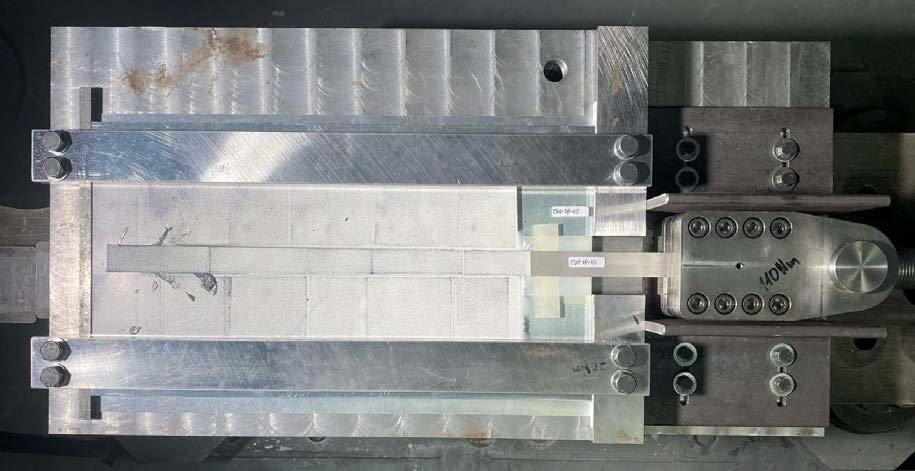Performance of Glass to Iron-based Shape Memory Alloy Adhesive Shear Joints with Different Geometry
DOI:
https://doi.org/10.47982/cgc.8.397Downloads

Abstract
Previous research has shown that glass beams with external, mechanical post-tensioning along their edges show better structural performance than glass beams without any such reinforcement. The initial and post-fracture load-bearing capacity of glass beams can be increased by reinforcing them with stainless steel or fiber-reinforced plastic (FRP) tendons that are post-tensioned and connected to the beam edges. However, post-tensioning of stainless steel or FRP bars or strips is complex and challenging because it often requires special setups, such as hydraulic jacks. Iron-based shape memory alloys (Fe-SMAs) are promising post-tensioning materials due to their efficient activation procedure and good mechanical properties. The target prestress level can be introduced by heating the Fe-SMA to a specific temperature followed by cooling down naturally to ambient temperature. As a contribution to assessing the feasibility of strengthening glass elements with adhesively bonded Fe-SMA strips, this paper focuses on the bond behavior of glass-to-Fe-SMA lap-shear joints based on numerical investigations. A finite element model is developed to evaluate the effect of adhesive thickness, Fe-SMA strip thickness and bond length on the structural behavior of glass to Fe-SMA lap-shear joints.
Published
Issue
Section
Joints, Fixings & Adhesives
License
Copyright (c) 2022 zhikang deng, Vlad-Alexandru Silvestru, Julien Michels, Lingzhen Li, Elyas Ghafoori, Andreas Taras

This work is licensed under a Creative Commons Attribution 4.0 International License.



